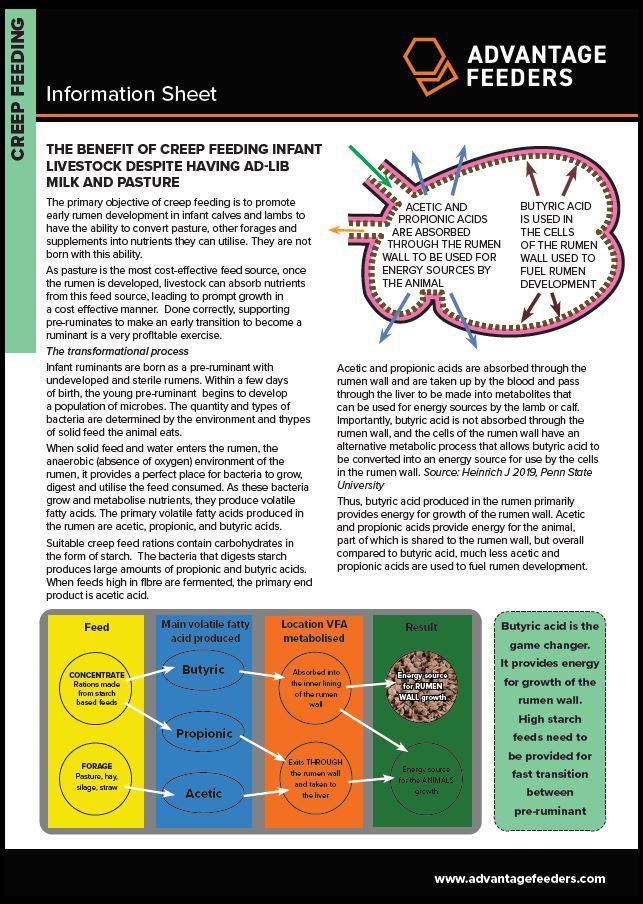CREEP FEEDING: Compare creep feeding calves to providing no additional supplement
Young animals are born with inactive rumens. Proactively intervening, by creep feeding, to transition the young animals’ rumen to eat pasture at a much young age allows them to grow a lot faster. This increases their ability to reach target weights before pasture quality deteriorates and reduces the number of stock needing to be finished in a high cost system. Our research has shown that supplementing 750g/day has increased weaning weights by more than 200g/day.
Our information sheet (right), provides a brief overview and explains:
- How early rumen development is key to achieving early and maximum lamb growth rates
- The science behind the benefits of adding starch to the diet for butyric acid production
- Quantifying potential gains from creep feeding
Farming operations are complex. The following pros and cons have not been factored into this calculator:
- Achieving higher growth rates means that your young stock can reach target weights earlier and, potentially, be sold in earlier markets for a premium, or calving can be delayed to better match feed consumption with pasture growth rates to reduce the expense of supplementary feeding.
- It is common for feeders used in this calculator to be used for other purposes at different times of the year. This reduces the depreciation expense and increases the return on investment.
- Having a consistent ration with supplement before and after weaning reduces the feed loss stress of cows being taken away from calves.
- Creep fed calves are trained to feeders so if feeders need to be reintroduced for finishing them on pasture or in a feedlot, the transition to the supplement feed can be much easier.
- Higher growth rates achieved during this time will lead to higher weights at joining and increase the conception rate of heifers.

